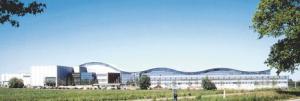Max Planck-Princeton partnership in fusion research
30 Mar 2012
-
Claudia Kahmen, Max-Planck-Institute for Plasmaphysics
The Max Planck Society is strengthening its commitment to the development of a sustainable energy supply and has joined forces with internationally renowned Princeton University to establish the Max Planck Princeton Research Centre for Plasma Physics.
Shirley M. Tilghman, the president of Princeton University, and Peter Gruss, president of the Max Planck Society, signed the agreement for the establishment of the new research centre on the Princeton University campus on 29 March 2012. On that occasion Peter Gruss stressed: "It is essential that we pool our strengths and knowledge in the field of fusion research in particular, so that we can develop nuclear fusion into something the world urgently needs for the years and decades to come: safe, clean and dependable energy technology."
The new centre's partners in the field of fusion research are the Max Planck Institute for Plasma Physics in Garching and Greifswald (IPP) and the Princeton Plasma Physics Laboratory (PPPL). In the field of astrophysical plasmas, the MPI for Solar System Research (Katlenburg-Lindau), the MPI for Astrophysics (Garching) and Princeton University's Department for Astrophysical Sciences are also involved. "The aim of the cooperation is to make greater use of the synergies between fusion research and the work carried out by the astrophysicists," explains Sibylle Günter, Director of the MPI for Plasma Physics. For example, it has emerged that many methods developed by fusion research are also applicable for astrophysics. It is also intended to apply insights into fusion and astrophysical plasmas to the further development of theoretical models, and thereby advance the research on fusion power as an energy source suitable for practical, everyday use.
Sibylle Günter from the MPI for Plasma Physics, Stewart Prager from the PPPL and Jim Stone from the Department for Astrophysical Sciences form the Leading Team of the Max Planck Princeton Centre. Also involved are IPP Directors Per Helander and Thomas Klinger, Sami Solanki from the Max Planck Institute for Solar System Research and Simon White from the Max Planck Institute for Astrophysics.
All of the partners on both the German and American sides have extensive experience in the fields of fusion research and astrophysics, and complement each other in different ways. The IPP is working on a tokamak experiment in Garching, which is based on the design of ITER. The IPP researchers are also building the Wendelstein 7-X Stellarator in Greifswald, and the PPPL has already contributed hardware for this project. Given that the PPPL is very interested in stellarator physics but is not carrying out an experiment of its own in this area, Günter assumes that this cooperation will intensify further with the establishment of the new centre. The PPPL, which is the leading institute in the field of fusion research in the US, operates a spherical tokamak and carries out laboratory experiments on general plasma physics, a topic that is also researched in Greifswald. The partners from the Max Planck Society and Princeton University would like to avail one another of their respective experimental systems and develop new theoretical models and codes in the context of the new centre.
The Max Planck Princeton Research Centre for Plasma Physics will promote the exchange of scientists, in particular junior scientists. To this effect, the scientists could cooperate on an experiment campaign at the corresponding institute or work jointly on the development of computer programs.
The new centre is one of ten Max Planck Centres that are currently being established at nine locations throughout the world.



